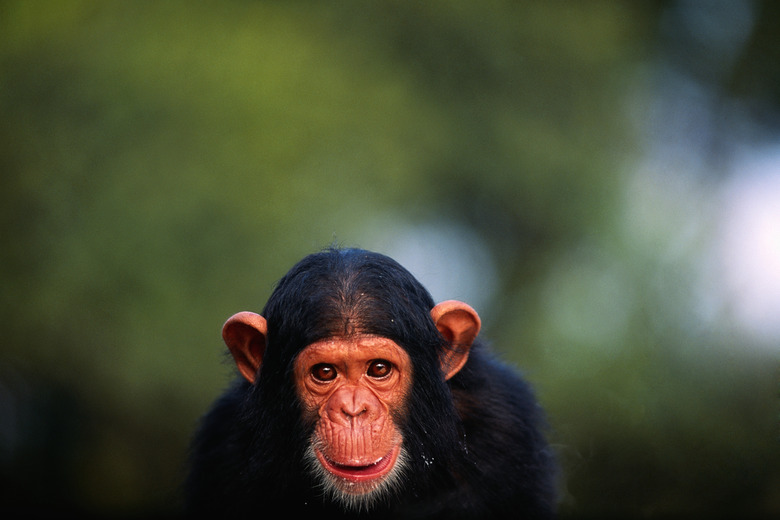The Difference Between Chimpanzee Skulls & Human Skulls
In most taxonomies, modern humans are placed in the family "Hominidae" along with the great apes: gorillas, orangutans, chimpanzees and bonobos. Given that humans and chimpanzees share around 98 percent of their genomes, it is not unexpected that, at first glance, their skulls might look fairly similar to the untrained eye. However, there are number of traits to look for that will help you tell the difference.
Cranial Capacity
Cranial Capacity
A major difference between human and chimpanzee skulls is the size of the braincase. The average human brain is about three times the size of the average chimpanzee brain. This can be seen by looking at the back of the skull; human skulls have a rounded braincase that is much larger than that of a chimpanzee, to house their much larger brains. Chimpanzee skulls also have a noticeable ridge across the braincase where the neck muscles attach.
Prognathism
Prognathism
Chimpanzees and other apes display what is known as "facial prognathism," where the face protrudes beyond the top of the skull. Human faces are relatively flat in comparison. Additionally, a chimpanzee's skull has no forehead and has prominent brow ridges above the eye sockets, whereas a human skull has an obvious forehead and chin. In fact, humans are the only primates with chins, so this is a telltale difference between humans and any other ape.
Dentition
Dentition
Human teeth are small and relatively regular in size throughout the jaw in comparison to chimpanzee teeth, and the jaw is smaller overall. Chimpanzees have sharp, pronounced canines in the upper jaw that sit against large lower premolars in the lower jaw. These large teeth are used for threat displays and as weapons. Also, the mastoid process, where the jaw muscles attach to the skull is more distinct in human skulls than in chimpanzee skulls.
Foramen Magnum Position
Foramen Magnum Position
The foramen magnum is the large hole on the underside of the skull where the spinal cord exits and follows the spinal column. The placement of the foramen magum underneath the skull allows the eyes to face forwards when the body is upright. In humans, the foramen magnum is positioned centrally, facing directly downwards, which allows the human body to be oriented vertically for bipedalism. In chimpanzees and other apes, the foramen magnum is positioned towards the back of the skull with the spinal cord exiting at a slight angle.
Cite This Article
MLA
Williams, Rae. "The Difference Between Chimpanzee Skulls & Human Skulls" sciencing.com, https://www.sciencing.com/difference-chimpanzee-skulls-human-skulls-8311413/. 13 March 2018.
APA
Williams, Rae. (2018, March 13). The Difference Between Chimpanzee Skulls & Human Skulls. sciencing.com. Retrieved from https://www.sciencing.com/difference-chimpanzee-skulls-human-skulls-8311413/
Chicago
Williams, Rae. The Difference Between Chimpanzee Skulls & Human Skulls last modified March 24, 2022. https://www.sciencing.com/difference-chimpanzee-skulls-human-skulls-8311413/
